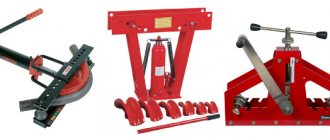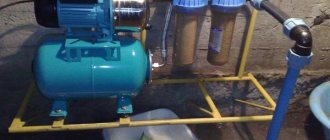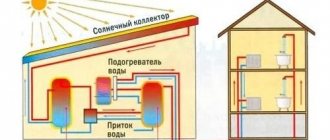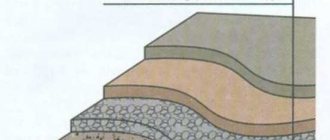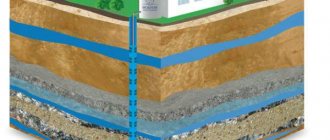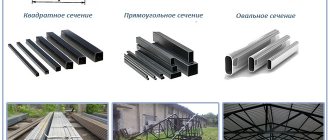A pipe bender or pipe bending machine is a special device designed for bending pipes. Most often, a pipe bender is classified as an industrial product, however, sometimes it is also necessary at home for repairs and installation. For use in domestic conditions, you can make a pipe bender yourself. How to do this and is a homemade device effective enough for the job?
Work specifics
The physical properties of the material largely determine the features of working with copper. Due to plasticity, the workpiece at the bend may decrease in diameter or even break. But you can deform a copper pipe manually. Methods for increasing bending strength will be described later.
The second feature of copper pipes is the need to heat them to effect deformation. Of course, it’s easy to handle thin-walled workpieces without a soldering iron or a gas torch, but it’s better to heat thicker elements (where there will be a bend) to make your work easier.
The third feature of bending copper pipes at home is the mandatory use of compensating elements. This is necessary to minimize the appearance of “corrugations” (waviness) on the inner wall of the tube. Examples would be sand, a steel spring, sometimes ice. Now let's look at the known methods of how to bend a copper tube at home.
Device requirements
A tool for bending copper tubes must meet a number of requirements:
- The bending process should be smooth. There should be no ruptures or microcracks on the workpieces.
- The material should not become thinner on the outside of the fracture.
- Ensuring acceptable bending radius of workpieces.
- The internal diameter of the tool should not change during work.
The surface of the pipe bender that comes into contact with the pipe must be flat.
This is interesting: Sealing machine: design, DIY production, drawings
Bending methods
Methods for giving a curved shape to a copper pipe are divided into two categories:
Industrial flexible tube bending refers to the use of special equipment - pipe benders. The most common are hydraulic and mechanical (manual). The former make it possible to minimize human physical effort, have replaceable nozzles for selecting a suitable bending diameter, and are used for large copper tubes. The latter are compact, work using human muscle power, and also have replaceable attachments in the form of a semicircle.
When repairing or installing copper pipelines, you don’t always have a pipe bender at hand. Therefore, users make do with improvised means.
Selection principles
When choosing a pipe bender, you need to pay attention to a number of factors:
- type of drive;
- working part material;
- bending console height;
- maximum permissible diameter, bending angle;
- availability of tooling.
Tooling includes front clamps, bending heads, tail clamps, and mandrels.
Models with electric and hydraulic drives are used in large enterprises in mass production. For use at home, a hand or mechanical tool is sufficient.
Household methods for bending copper pipes
These methods are distinguished by their applicability in a limited space, that is, in an ordinary apartment. There is no need for large equipment; bending a copper blank will not be much slower. Among the methods for bending copper tubes are:
- Spring-loaded. Allows you to bend a metal pipe at any angle. A spring is used, the length of which is equal to the length of the pipe. When bending forms of large diameter, it is placed inside the workpiece so that it rests against the walls; smaller diameter - worn externally. If it is necessary to deform a small section of the product, the spring is pushed to the place of the intended bend.
How is copper pipe bending done using a spring? The sequence of actions is as follows:
- place the spring outside/inside the tube;
- warm up the bend (or the entire pipe) with a blowtorch or gas torch;
- when the surface changes color to a darker one, begin bending;
- After deformation, leave the workpiece until it cools completely under natural conditions;
- remove the spring.
To get the product of the desired shape, you can use round metal objects as templates (for example, car rims, other pipes, etc.).
- Sand. Here again you will need a heating element and clean, sifted, completely dry sand. The sequence is:
- one of the ends of the copper pipe is clogged with a wooden plug (a wooden or rubber hammer is used!);
- the pipe cavity is filled with sand, while the workpiece is periodically tapped with a wooden plug on the surface (table, floor);
- Having filled the product completely, put on the same plug at the other end;
- apply a blowtorch or gas torch to the intended bend of the pipe, rotating the workpiece to ensure uniform heating;
- press one end of the pipe to the support, and carefully bend the other in the desired direction;
- Allow the deformed part to cool (in natural conditions or douse with water).
The good thing about this method is that if the bend of the pipe is uneven, it is permissible to straighten it - tap the place where the deformation has gone bad with a hammer. After the tube has cooled, the plugs are removed from it, sand is poured out, washed and used for its intended purpose.
If bending is performed in winter, it is possible to fill the internal cavity with ice. However, this is undesirable - when bent, it may break, and the fragments will damage the inner surface of the tube. Although, if the latter does not have special requirements, it is worth adopting the method.
Complicated bending of copper pipes
It happens that you need to bend a workpiece of a non-standard profile. For example, not round, but square. The spring method is not applicable here. All that remains is to use sand, a mallet, plugs and two supports. A pipe is placed on the latter, then heated, then the bend is tapped with a hammer until it is given the proper shape.
What to do if you need to bend the tube into a spiral? It's simple - you just need to find a cylindrical template with a diameter equal to the required one. The copper workpiece is slightly heated, then bent. This will create an even spiral.
Spiral bending at home
It can be difficult for beginners to bend a brass or copper tube into a spiral. To solve the problem you will need a rubber mallet and 2 supports. Sand or, less desirable, ice is poured inside. The tube is placed with 2 ends on the support points. After this, the bend point is gradually heated. As soon as the material begins to yield, a mallet is taken into hand. With its help you need to bend the pipe. Each action must be as balanced as possible, otherwise the material will simply crack.
The following recommendations will help reduce the likelihood of errors:
- If the tube is too hard, it needs to be burned a little to make it more flexible;
- As soon as it has cooled, filler is poured into it, after which it is easier to bend it at the required angle;
- The use of a cylindrical support will give the product an even shape.
Laying a sewer or water supply requires increased attention to the quality of the pipes used. You can give them the required shape yourself or using hydraulic equipment. Regardless of your choice, you need to be extremely careful. The pipe surface should not be exposed to excessive heat. Do not hit it too hard, otherwise the pipe will simply crack at the bending point.
Some useful tips
There are several ways to obtain bent copper pipe. Each is good in its own way, but there are points that are always important to take into account, regardless of the chosen deformation method.
- The main requirement for the user when working is accuracy and attentiveness. Sudden movements will lead to excessive deformation of the pipe walls and their complete rupture.
- Parts made of annealed copper are the easiest to bend, so heating them takes a minimum of time.
- If the bend is not made where needed, you can reheat the workpiece and bend the product back. However, no one guarantees that the shape of the tube will be the same.
- If the surface overheats, the metal may simply begin to melt. It is unacceptable. The user must carefully follow the process from start to finish.
Required tools for assembly
You won’t be able to make a good pipe bender with a hammer, screwdriver and screws.
At a minimum, when making this tool you will need:
- welding machine;
- Bulgarian;
- lathe;
- drill.
But the main part of assembling a pipe bender remains an accurate drawing, without which you should not even start assembly work. When making a pipe bender, you cannot do without general household tools.
Naturally, it is not necessary to purchase a lathe and welding machine. To turn several parts from blanks and weld them, you can contact your friends or a workshop that produces forged products. For a small fee, they will quickly help you do everything you need.
Advantages of copper pipes
Copper pipes are widely used in almost all areas of our activities.
The advantages arise from the characteristics of the metal:
- use for drinking water supply due to bactericidal properties;
- can withstand physical factors (impacts, bends);
- with low service costs and installations have a long service life;
- low cost, which entails cost savings;
- easy to process and install;
- the presence in the retail chain of a huge selection of equipment for copper products, which makes their installation easy;
- absence of any deposits on the metal walls;
- wide temperature range from -200 to +200 degrees, no deformation when changing temperatures;
- good anti-corrosion properties.
Take note: copper pipes have decorative properties and look good in any interior.
Methods for bending copper pipes
Pipe bending can be carried out in different rooms, in which there may or may not be enough space for work. In order to make work possible in any environment, various pipe benders are produced.
Spring pipe bender
The design of this type of pipe bender is elementary. It is a durable spring made from high quality spring steel with tight coils. On one side the spring is slightly wider than on the other (to make it easier to put on and take off).
The operating principle is very simple. The spring and copper tube must match each other in diameter. The spring, due to its shape and material, will prevent the tube from breaking or becoming deformed. Using a wide hole, the spring is placed on a copper tube and advanced to the bend. You need to take the spring by the edges with your hands and bend it to the required state. After bending, remove the spring from the copper tube from the edge through which it was put on.
- small weight;
- simple device;
- ease of use in any space limitation.
- bending due to direct physical force;
- high probability of error when choosing the bending angle (overbending or underbending);
- pulling to the bend along the pipe, which is very inconvenient when the bend is far from the edge;
- For different diameters of copper pipes, it is necessary to have a suitable spring.
Mechanical pipe benders
This type of pipe bender greatly simplifies bending work. They increase the force applied by the worker and have a fairly accurate bend angle. Divided into:
- Segmental pipe bender. Looks like a small machine. It can bend pipes with a diameter of up to 42 mm. The largest bend angle is 180 degrees. It is equipped with interchangeable stops for various pipes. The tube is inserted between the roller and the segment to which it is attached. The segment looks like half a disk. Rotating the handle causes the segment to move. Rotating, it tightens the tube around its own body and bends it to the required angle.
Crossbow type pipe bender
A lever pipe bender has two levers. On one there is a shoe, on the second there is a bending template. The template and shoe have markings along which the pipe is bent to the required angle. The pipe bender handles are positioned in different directions, the pipe is placed in the bending template and secured. The lever with the shoe is placed on the tube, while the zero mark on the shoe and the template are aligned. After this, the tube is bent using levers. Bending to the required angle must be done slowly. After bending, the tube is removed.
Advantages of lever pipe benders:
- small physical loads on levers;
- bend pipes at a clearly defined angle within 180 degrees;
- light weight;
- aesthetic appearance of the pipe after bending.
- each pipe diameter requires its own lever tool;
- cannot be used for large diameter pipes.
Manual pipe bender
Manual pipe benders are, in most cases, manual devices that can be used to bend pipes with a diameter of 5 to 125 mm.
Bending of a copper pipe occurs using a special manual mandrel pipe with a set bend radius. This mandrel can be inserted either inside the tube or pulled from the outside. By applying physical force when pulling the mandrel, the copper tube is given the desired bend shape. Most often, the mandrel is made of steel. To make it easier to pull out the inner part after bending, tie a wire to it.
This is interesting: Do-it-yourself universal manual pipe bender: manufacturing recommendations and photos
The main advantage is its low cost, but at the same time quite effective. The main disadvantage is the large physical effort that must be applied to bend the pipes.
Hydraulic pipe benders
They are very similar to mechanical crossbows. The difference is that by moving the lever, the hydraulic system does all the work. They can bend pipes from 10 to 50 mm in diameter. The largest bend angle is 90 degrees. The set of such a pipe bender includes different segments for bending, which can be changed for pipes of different diameters.
Classification
Tools for bending pipes are divided into several types depending on the type of drive, design, operating principle:
- Spring-loaded. It consists of a steel spring, on one edge of which a bell is fixed. The principle of operation is that one end of the pipe is placed in a socket. The spring is moved by physical force to the bending point. The tube is bent to the required angle. Manual mini springs are convenient to use in garages and home workshops. Since the working process is carried out using physical force, there are restrictions on the maximum diameter of the parts being bent.
- Manual pipe benders. Simple mechanical models for bending workpieces with a diameter of 5–125 mm. The basis of the tool is the mandrel. It is pulled over the outside of the tube or inserted inside. The mandrel is bent in advance at the required angle.
- Mechanical tools. The process of bending the tubes occurs thanks to a lever system that does not require much effort on the part of a person.
- Hydraulic installations. Designed for bending large diameter pipes. They have many settings and increased accuracy.
- Electrical tools. The lever system operates thanks to an electric drive. Such models relate to industrial equipment and are used in mass production.
Mechanical pipe benders are:
- Segmental - tools designed to work with parts with a diameter of up to 42 mm. The maximum bending angle is 180 degrees. Supplemented with a set of replaceable stops.
- Crossbow - in appearance they resemble small arms from the Middle Ages. The process of bending parts occurs by changing the position of the ratchet mechanism, which is connected to the lever system.
- Lever - simple design. The maximum bending angle is 90 degrees. Acceptable tube diameters are 6–22 mm. The design has two levers on which the shoe and template are attached.
Industrial pipe benders are not suitable for field use. Therefore, you need to have a hand tool at hand.
Making a pipe bender with your own hands
In order to make a pipe bender with your own hands, you need to create its base. The basis of the future pipe bender will be a tube with a rectangular cross-section of walls. It must be thick enough to withstand a load with a wall thickness of at least 3 millimeters.
From the edge of this tube, at a distance of 2-3 cm from the edge, it is necessary to make a hole, the size of which should be equal to the size of the axis of the main pulley (it will be used for bending pipes).
Next, you need to mark the largest bend radius that your pipe bender makes and add 5 cm. Having measured this length, cut off the excess part of the tube. The tube stop looks like a pin with a nut on one side and a T-shaped stop on the other.
Having finished with the base, you need to make a pipe bender handle. To do this, you need to have two iron plates with a thickness of 4 mm. The handle will subsequently be attached to the axis of the base, so the width of the plates should be the same as the diameter of the axis. To be sure, leave a distance of 5-10 mm on each side. To make the handle stronger, these plates can be welded together in several places.
Now you can assemble the entire device. Clamp the base of the pipe bender with a vice. Place the handle plates and pulley one after the other on the base axis. Screw the stopper pin into the nut on the base. The homemade pipe bender is ready.
For a comparison of crossbow and spring pipe benders for copper pipes, watch the video:
See inaccuracies, incomplete or incorrect information? Do you know how to make an article better?
Would you like to suggest photos on the topic for publication?
Please help us make the site better! Leave a message and your contacts in the comments - we will contact you and together we will make the publication better!
Reviews and comments
Those who always ask to find information related to repairs are our dads. I found this site for my dad. We used to have a manual pipe bender - it’s cheap, but you have to make such incredible efforts. Just awful. Judging by reviews on the Internet, hydraulic tools are more convenient. Tell me how to handle it correctly? I would like to know more information about the nuances of the work. Thank you.
If you need to bend a tube made of copper, it is better not to try to do this without special tools, as the result may be disastrous. One of the devices that allows you to perform this procedure as efficiently as possible is a pipe bender for copper pipes. Such pipe benders, presented in various models on the modern market, are successfully used to create communications from copper pipes - water pipes, air conditioning systems, etc.
It is possible to bend a pipe without defects only with the help of a pipe bender
Advantages of using copper pipes
The high popularity of copper pipes, which are actively used in many areas, is explained by a number of advantages that distinguish such products.
- Pathogenic bacteria do not develop on the walls of copper pipes, so these products can be successfully used for installing pipelines through which drinking water is supplied to consumers.
- Copper tolerates mechanical loads of various types quite well.
- Copper piping is extremely durable. At the same time, the costs of its installation and maintenance are relatively low.
- Installation work and preparation for it are quite easy.
- For the installation of pipelines made of copper, a large number of components are available on the modern market, so this procedure does not cause any special problems.
- Plaque does not form on the inner walls of copper pipes. This means that the clearance of the pipeline does not decrease and, accordingly, its operational characteristics do not deteriorate.
- The properties of copper make it possible to successfully operate pipes made from this metal in a fairly wide temperature range: from –200° to +200°.
- Due to the presence of a stable oxide film, copper perfectly resists corrosion, so copper products can be successfully used for a long time.
- Copper pipes are highly decorative, which allows them to be used in almost any interior.
Types of pipe benders
When choosing a pipe bender for copper pipes, you should take into account both the characteristics of the product itself that is to be processed, and the parameters of the desired result. It is worth dwelling in more detail on the design features of each of the most common bending devices for copper pipes.
Spring
The spring pipe bender for copper pipes, despite the simplicity of its design, is highly efficient. The basis of the design of such a device, as its name suggests, is a spring with dense coils, made of high-strength steel. One of the ends of such a spring is expanded to make it more convenient to put it on and also remove it from the tube being processed.
Spring tube benders are used for bending soft copper tubes of small diameter
The principle by which a spring pipe bender works is quite simple and is as follows.
- A spring, the inner diameter of which must correspond to the outer diameter of the copper tube being processed, is put on it with its wide end.
- By means of physical force exerted on the spring, the tube is bent to the required angle.
- After the copper tube is bent, the spring is removed from it through the same end through which it was put on.
Distance from the crimping point to the bend
Brake pipe designs typically have short distances from the start of the pipe to the first bend and from the final bend to the end of the pipe. This is eliminated by manufacturing special sliding shoe inserts, special rollers and clamps, as well as collets of a special design adapted to a specific brake pipe.
Pipe bending machines made in Russia, best suited for bending brake pipes:
- Automatic three-axis pipe bender CE-30 PARTNER.3Х
- Semi-automatic pipe bending machine 3-axis CE-30 PARTNER
- Manual pipe bender for brake pipes 3-axis CM-30/3 PARTNER
- Automatic three-axis pipe bender CE-51 MASTER.3Х
- Semi-automatic pipe bender 3-axis CE-51 MASTER
How to make an effective pipe bender with your own hands
When wondering how to bend copper pipes correctly, it is not at all necessary to purchase a serial device for this: a simple but effective device can be made with your own hands.
Drawing of a handmade homemade pipe bender (click to enlarge)
So, to make a homemade pipe bender, you can do the following.
- The basis of the future device is made from a rectangular metal pipe. A hole is drilled from one edge of the base (at a distance of 2–3 cm from it) into which the axis of the main pulley will be inserted. In addition, another hole must be made in the base pipe into which a T-type stopper will be installed.
- The handles of a homemade pipe bender can be made from metal plates, the thickness of which should be at least 4 mm.
- When all the preparatory steps are completed, the base is clamped in a vice, the axle is inserted into the prepared hole, and the handles of the device and its pulley are fixed on it. The last thing you will need to do is secure the T-shaped stopper in the hole in the base.
